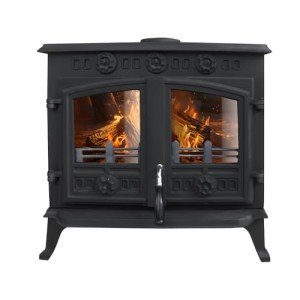Understanding Contemporary Multi-Fuel Burners: A Comprehensive Guide
In the quest for sustainable heating options, contemporary multi-fuel burners have emerged as flexible devices that permit house owners and services to maximize readily available fuels. These burners can effectively utilize numerous fuel types, consisting of wood, coal, pellets, and more, making them an attractive option for those aiming to improve their heating abilities while minimizing their carbon footprint. This short article will explore the operational principles, benefits, setup considerations, and the future of contemporary multi-fuel burners.
What is a Multi-Fuel Burner?
A multi-fuel burner is a type of heating gadget designed to burn different fuel types while preserving effectiveness and safety. Unlike conventional wood stoves or coal burners, contemporary designs are engineered to adapt to numerous fuels, enabling users to choose the most financially and environmentally practical option based upon their availability or market rates.
Secret Features of Contemporary Multi-Fuel Burners
- Versatility: Can burn several kinds of fuels.
- Effectiveness: Designed to enhance combustion performance across different fuels.
- Eco-Friendly: Reduced emissions when using sustainable energy sources.
- User-Friendly: Often geared up with innovative controls for simple operation.
| Function | Description |
|---|---|
| Fuel Types | Wood, coal, pellets, and more |
| Heat Output | Usually varies from 5kW to 12kW |
| Control Systems | Manual or automated temperature level control |
| Emissions | Low PM and CO emissions |
| Maintenance | Routine cleansing and occasional maintenance |
Advantages of Using Contemporary Multi-Fuel Burners
- Cost-Effectiveness: Utilizing cheaper fuel sources can substantially lower heating costs.
- Ecological Impact: More effective burning of fuels can cause decreased greenhouse gas emissions, adding to cleaner air.
- Fuel Availability: Users can choose their fuel based upon local availability, enabling flexible heating solutions.
- Resilience: In times of fuel scarcities, the ability to switch to renewable fuels guarantees a constant heating supply.
Potential Fuel Sources
- Biomass (e.g., Wood pellets or chips)
- Coal (e.g., Anthracite, Bituminous)
- Electricity (for supplementary heating)
- Natural Gas (in hybrid models)
Installation Considerations
Installing a contemporary multi-fuel burner requires cautious preparation and adherence to security and regulatory requirements. Key factors to consider include:
- Location: Placement ought to ensure appropriate ventilation and heat circulation.
- Chimney System: An ideal chimney is necessary for properly venting smoke and gases.
- Clearances: Must meet specific clearance requirements to walls and furnishings.
- Fuel Storage: Adequate area must be designated for keeping different fuels.
Setup Steps:
- Site Assessment: Evaluate the area for the best placement.
- Choose the Right Model: Select a design fit for the desired fuel types and heat requirements.
- Expert Installation: Engage a certified specialist for setup to ensure compliance with regional building regulations.
- Safety Checks: Once set up, carry out comprehensive security checks on the system and exhaust.
Upkeep and Care
Maintaining a multi-fuel burner is vital for efficiency and security. Regular maintenance routines ought to include:
- Routine Cleaning: Remove ash from the combustion chamber and flue for efficient burning.
- Assessment: Regular look for wear and tear in the burner system.
- Chimney Sweeping: Annual chimney cleaning is necessary to avoid fire hazards.
Future of Multi-Fuel Burners
The future of multi-fuel burners looks appealing as advancements in technology continue to enhance effectiveness and minimize emissions. Multi Fuel Burning Stoves as automated fuel feeding systems and wise innovations are being included, allowing for better control and monitoring of heating unit.
Furthermore, federal government incentives and programs supporting eco-friendly energy use are most likely to increase the adoption of multi-fuel burners amongst eco-conscious customers and services. The ongoing research study into even cleaner combustion methods reflects a substantial shift towards sustainable heating practices.
Often Asked Questions (FAQs)
Q: Can I use any type of fuel in a contemporary multi-fuel burner?A: No, it is necessary to describe the manufacturer's guidelines on compatible fuels for optimal performance and safety. Q: Are multi-fuel burners efficient?A: Yes, when appropriately
installed and preserved, multi-fuel burners can achieve high combustion performance and produce lower emissions than traditional single-fuel systems. Q: How typically ought to I perform upkeep on my multi-fuel burner?A: It is recommended to conduct regular cleaning after each use and carry out a comprehensive examination a minimum of as soon as a year
. Chimneys must likewise be swept each year. Q: What type of fuel offers the best ecological benefits?A: Biomass fuels, such as wood pellets, usually provide significant environmental advantages
when sourced sustainably, as they are renewable and can have a lower carbon footprint compared to fossil fuels. Contemporary multi-fuel burners represent an ingenious option for sustainable heating in today's eco-conscious landscape. Their adaptability permits users to select from different
fuel sources, ensuring both economic and environmental advantages. Proper setup, upkeep, and adherence to safety requirements are vital to make the most of the capacity of these systems. As innovation advances, the future of multi-fuel burners assures even higher efficiency and lower emissions, making them an attractive option for residential and commercial heating needs.

